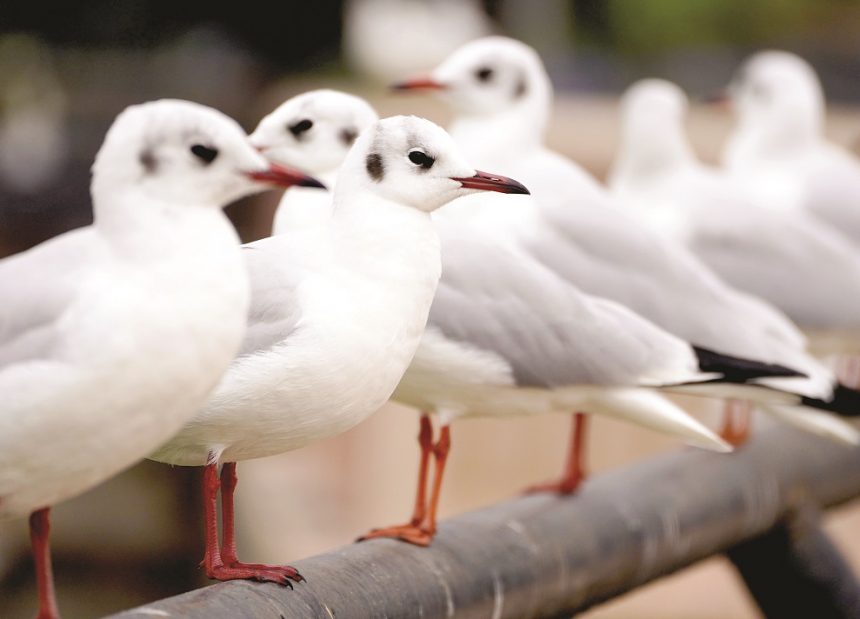Srinagar, Nov 10: A recent visit by a group of environmental experts to Kashmir’s wetlands has raised alarms over their deteriorating ecological condition, with most wetlands found parched and devoid of migratory birds. The group, part of the Environmental Policy Group (EPG), visited Shallabugh, Hokersar, and Hygam wetlands to assess their ecological status.
Faiz Bakshi, Convener of the EPG, stated that none of the wetlands had water, and migratory birds, typically seen in November, were absent. “Tourists travel from distant places to witness migratory birds, but if they arrive to find empty wetlands, it not only damages the reputation of our natural reserves but also harms tourism and local livelihoods,” he said.
Bakshi called for the Wildlife Department to provide accurate information and take immediate action to restore the wetlands, which are crucial for the biodiversity of the region. The wetlands serve as important staging areas for migratory birds and breeding grounds for various waterfowl species.
Ajaz Rasool, Advisor to EPG and member of the Governing Council Body, stated that there is no water anywhere in Shallabugh and migratory birds that usually arrive in the first week of November have not been sighted.
“During the visit we came to know that lately in early spring there were some minor breaches in the wetland’s bund at six places which require just a week for restoration,” he said.
Rasool, a Kashmir-based Hydraulic Engineering expert and Environmentalist, said, “there is lack of water as there has been deficit rainfall and climate change which is also a reason.”
“We suggested to the concerned stakeholders of the Wildlife Department if they could divert some water from Sindh River which would inundate the wetland area,” he said.
“If a wetland remains dry for a long time it will affect aquatic biota besides adversely affecting activities of avian birds. There should be a contingency plan, just as in other places in India to meet such exigencies,” the environmentalist said.
Rasool noted that the impacts of global warming and climate change have led to two major records: the Jhelum River, the main waterway of the valley, reached its lowest water level in 72 years, and last year, the valley experienced its second hottest September day in 132 years.
He said the managers of Wetlands should be aware of the effects of global warming and climate change which are not sudden but have been witnessed since the past so many years.
Ahmad Ayaz, an environmental activist who was part of the group’s visit, said that Kashmir’s wetlands used to have sufficient water and never faced such issues.
“But today, these wetlands have dried up completely, leaving no water. Without water, migratory birds simply won’t come here. The Wildlife Department should have closely monitored the wetlands in light of climate change and taken appropriate action,” he said.
“Instead of birds, all you can see there now is cattle grazing. We hope the department takes steps to restore water to the wetland. The department has misled the public by claiming that migratory birds have arrived, but that is not the case at Shallabugh,” the activist said.
Ayaz suggested that the department investigate why its officials are providing false information to both higher authorities and the general public.
However, Wildlife Warden Wetlands, Division Kashmir, Altaf Hussain Dentoo, told Rising Kashmir that many feeder streams of wetlands in the valley are low on water due to an extended dry spell. “The water levels in the wetlands are reduced,” he said.
Altaf stated that restoration efforts at Hokersar Wetland have been completed, with two major water regulation projects completed by Irrigation and Flood Control Department. “When the group visited, water gates were closed; they were opened just three days later,” he said.
“Due to essential interventions, we had temporarily diverted the water, but it was restored. Within a week, water levels in Hokersar Wetland should improve,” he said.
Altaf added that restoration work on the Shallabugh and Hygam canals is ongoing, and water levels are expected to improve in the future.
The Wildlife Warden noted that the current count of migratory birds is low, but they expect it to reach full numbers within the next 15 days.
“The situation is not that concerning. Where water levels are adequate, birds have started arriving, but they won’t stay in wetlands with low water levels. You can even spot migratory birds at Dal Lake. In the next 10-15 days, water levels are likely to improve, and bird numbers are expected to increase,” he said.
Kashmir Wetlands found dry, migratory birds absent
Water levels are likely to improve, bird numbers are expected to increase: Wildlife Warden Wetlands

Leave a Comment
Leave a Comment







